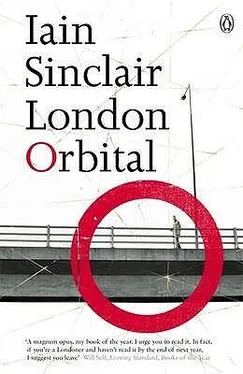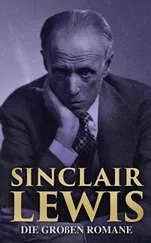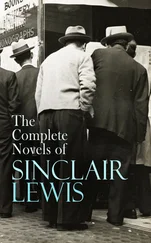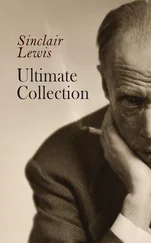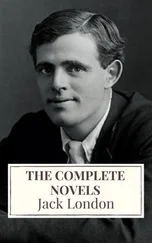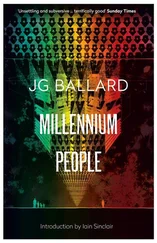The grey sheets — which spookily show Renchi’s hand holding the book open — trace the story of the De Sancto Claro family to Danbury, to the opening of a ‘leaden coffin’ thought to contain ‘the body of the Knight templar represented by the effigy’.
On raising the lead coffin, there was discovered an elm coffin in-closed, about one-fourth of an inch thick, very firm and entire. On removing the lid of this coffin, it was found to enclose a shell about three quarters of an inch thick, which was covered with a thick cement, of a dark olive colour, and of a resinous nature. The lid of this shell being carefully taken off, we were presented with a view of the body, lying in a liquor, or pickle, somewhat resembling mush-room catchup, but paler, and of a thicker consistence. The taste was aromatic, though not very pungent, partaking of the flavour of catchup, and of the pickle of Spanish olives. The body was tolerably perfect, no part appearing decayed, but the throat, and part of one arm: the flesh every where, except on the face and throat, appeared exceedingly white and firm. The face and throat were of a dark colour, approaching to black: the throat was much lacerated…
The coffin not being half full of the pickle, the face, breast, and belly, were of course not covered with it. The inside of the body seemed to be filled with some substance, which rendered it very hard. There was no hair on the head; nor do I remember any in the liquor; though feathers, flowers, and herbs, in abundance, were floating; the leaves and stalks of which appeared quite perfect, but totally discolored.
Upminster is London-aspirant, but it is also submerged Essex. The Underground finishes, the railway runs east to Basildon and Southend. Suburbia revealed. Those sponsors of community art, Barratt, have been busy with their ‘computer generated’ Impressionism. Mega-hoardings: 100 PC HOME EXCHANGE AVAILABLE. Pavements white as tropical beaches. Strollers in unseasonal leisurewear.
The reality check is a grey filter, a winter sun dissolving at the road’s edge. Landscape dipping towards the distant motorway. A green and white sign: C. LONDON/ROMFORD/AI27. Tears in the eyes.
The evening fields dim, there’s a luminescence in the sky. Upminster is far enough from Lakeside to retain some retail heft; fewer charity shops than Dartford, more newsagents and dry cleaners. Eventually, tourists will arrive to photograph the station. It’s architecturally undistinguished, but definitive: The End of the Line. The town, old as it once was, is now an after-thought. You can smell the beginnings of north-east London; bigger houses, better examples of pargeting (oak trees and herons).
We decide to go with the flow of commuter traffic, to stick with the road. Empty heads and tired feet. Upminster to Harold Wood. We’re walking a metalled ridge, hedges and villages, golf courses, empty fields. The dawn sky, witnessed over the Thames at Grays, is matched by dusk at Harold Wood. An effect worthy of Luke Howard or John Constable: underlit cloud-bands above black ground, an horizon of jagged roofs.
A final photograph to celebrate Harold Wood, suburb of suburbs. A composition in three bands. (1) Pargeted oak panel. (2) Picture window, with stained-glass roses; in which walkers, road and evening sky are reflected. (3) Twin hebe bushes (bought at one of the Enfield Chase garden centres).
Now that there are destination signs for Epping Forest and the M25, we can look for the railway station. The next walk, with luck, will return us to Waltham Abbey, and close the circuit.
7 December 1999. Liverpool Street station: seven a.m. The idea is to muster the full troop for the return to Waltham Abbey. Kevin Jackson is game, the first arrival. He’s so frightened of being late, I have to check the back of his flying jacket for benchmarks. Has he slept here? Pale, pouchy, collar up: the holy drinker shakes recognisable by railway postmen. When I worked in Liverpool Street on the night shift, I learnt to spot non-travelling travellers, TV actors in camelhair coats resting their heads on smart leather luggage. The second-time divorced, newly dropped from a series and come, by habit, to witness the departure of the last train for Colchester. Dossing down, moving off early for a shave in the Gents. A black coffee. A call to the agent’s answerphone.
Kevin is mustard keen and alarmingly over-bagged. Families have emigrated with less. Moose is burdened by a rucksack and an air-miles shoulder satchel. He’s going on somewhere, coming back from something: he never spends two nights under the same roof. It’s the Cambridge temperament, restlessness, guilt. The unfinished essay. The abandoned thesis. The masterwork that dies in the drawer. Now that Marxism is as respectable as marquetry (and about as relevant), the Cambridge Apostles have been forced to invent a new brand of subversion. A confederacy of reforgotten texts and landscapes. The loop from Harold Wood to Epping Forest should do the trick. Noak Hill, Watton’s Green, Passingford Bridge: even people who live there have never heard of them.
Marc Atkins doesn’t show. He wanted to. He was definitely up for it. He was going to bring his partner. But then he had to cancel at the last moment, he’d been offered an exhibition at the National Institute for Medical Research at Mill Hill. He had to take the meeting.
Renchi, panting, arrives just in time for the 7.20. He’s been on late shift. And battling through commuters, down the Drain, Waterloo to Bank. He grabbed a taxi, then decided it was quicker to run.
There are no cafés in Harold Wood. What would be the point? Everybody is moving in the other direction. By now, Renchi is operating with the most subtle of maps, discriminations of pink and scarlet, bruise-blue to sky-blue: a geological survey. As a work of art, great. Useless for locating sausage rolls. By my reckoning, there’ll be nothing but winter cabbage and raw turnips this side of Theydon Bois. We settle for a bacon roll from a baker’s shop.
Leaving the station, to cross the A12 and climb towards Dagnam Park, we have to cope with a stream of Harold Wooders rushing downhill, screeching into their cellphones. They are pale, soapy, razor-raw. Underdressed. The rest of the day will be spent in overheated offices, so this brief exposure to the weather has to be tolerated. Heels and halloween slap. The office, in fact, zooms out to meet them. Opening a telecommunications link, they are there before they arrive. Unpaid overtime eats into a period which should be spent in reverie. Jabber jabber jabber. The whole mob look like revenants, let out of the graveyard, being talked through unknown territory by a distant controller. Between bed and train, nothing. A dull blank. A set of Tipp-Ex’d snapshots.
The Saxon King pub, with its signboard portrait of King Harold (crown, sceptre, rock-dinosaur moustache), proves that we are on track for Waltham Abbey, the grave. Name five famous Saxon kings. Kevin Jackson probably could (in alphabetical order), but those bags are beginning to make themselves felt. If he has to go to ground, like cop-killer Harry Roberts in Epping Forest, he’s equipped for it: toothbrush, clean shirt, a yard of books.
Harold Wood, Harold Hill, the Saxon King. A stucco forest of ancient trees leading to the Royal Oak pub. The houses on Harold Hill have been laid out in crescents and circuses that look from the air like helmets and shields. This, according to Pevsner, was ‘one of the largest L.C.C. housing enterprises after the Second World War’. Seven thousand three hundred and eighty units for 20,000 metropolitan emigrants. ‘Architecturally not much of special interest can be discovered.’ How much time, I wonder, did Pevsner spend here? His wife at the wheel. Was there anything to get him out of the car?
Читать дальше
